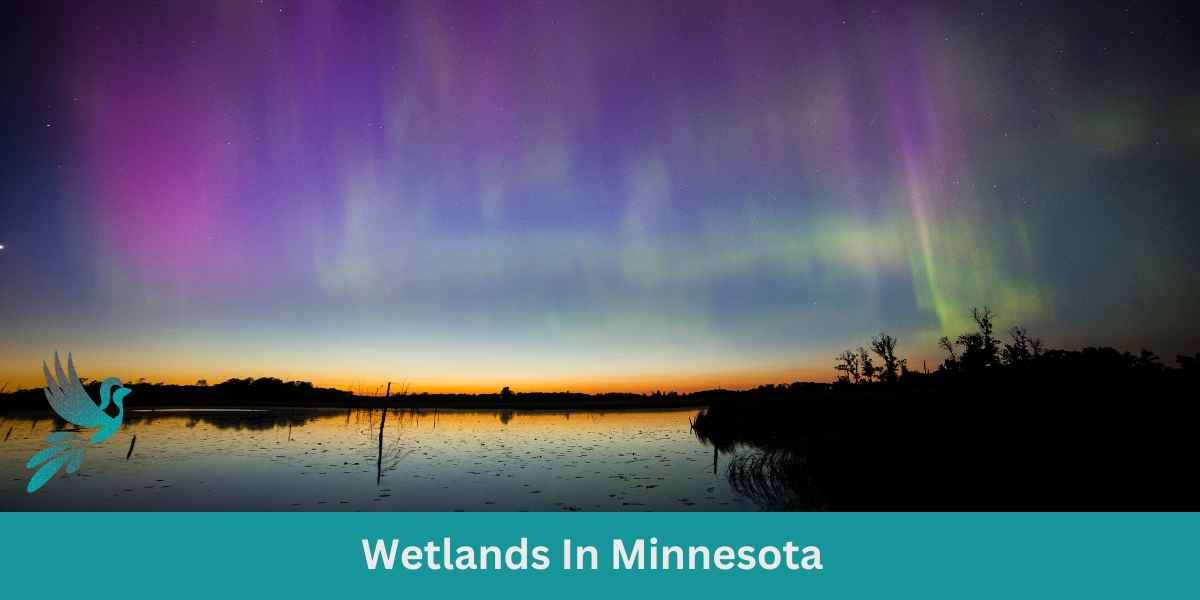Have you ever wanted to explore the beautifully diverse wetlands of Minnesota? Look no further than the “Wetlands In Minnesota” guide. This detailed resource provides a comprehensive overview of all the stunning wetlands that can be found throughout the state. From the serene and tranquil marshes to the vibrant and teeming swamps, this guide offers a wealth of information to satisfy your curiosity and ignite your sense of adventure. Whether you’re a nature enthusiast, a keen photographer, or simply someone looking to immerse yourself in the natural wonders of Minnesota, this guide is your key to unlocking the hidden treasures of these fascinating wetlands. Get ready to embark on an unforgettable journey through Minnesota’s wetland wonders with “Wetlands In Minnesota.”
Overview of Wetlands in Minnesota
| Wetland Name | Location (Town/City or Region) | Wetland Type |
|---|---|---|
| Agassiz National Wildlife Refuge | Marshall County | Marshes, wet meadows, bogs |
| Boundary Waters Canoe Area Wilderness | Northern Minnesota | Freshwater lakes, bogs, swamps |
| Tamarac National Wildlife Refuge | Detroit Lakes | Bog, marshes, lakes |
| Red Lake Peatland | Northern Minnesota | Peatland, bogs |
| Big Bog State Recreation Area | Waskish | Bog |
| Sherburne National Wildlife Refuge | Zimmerman | Wetlands, bogs, marshes |
| Chippewa National Forest | Northern Minnesota | Lakes, bogs, swamps |
| Mille Lacs Lake | Mille Lacs County | Freshwater lake, wetlands |
| Rice Lake National Wildlife Refuge | McGregor | Marshes, bogs |
| Itasca State Park | Park Rapids | Freshwater springs, bogs |
| Crane Meadows National Wildlife Refuge | Little Falls | Marshes, wet meadows |
| Minnesota Valley National Wildlife Refuge | Twin Cities Metro | Wetlands, marshes |
| Lake Bemidji State Park | Bemidji | Bog |
| Scenic State Park | Bigfork | Bog, lakes |
| Superior National Forest | Northern Minnesota | Lakes, bogs, swamps |
| Maplewood State Park | Pelican Rapids | Lakes, wetlands |
| Sand Lake Peatland | North-Central Minnesota | Peatland, bogs |
| Glacial Ridge National Wildlife Refuge | Polk County | Wet prairie, marshes |
| Bluestem Prairie Scientific and Natural Area | Clay County | Prairie potholes |
| Rydell National Wildlife Refuge | Polk County | Wetlands, ponds |
| Old Mill State Park | Argyle | Wetlands, marshes |
| Carlos Avery Wildlife Management Area | Forest Lake | Wetlands, marshes |
| Frontenac State Park | Frontenac | Wetlands along the Mississippi River |
| Upper Sioux Agency State Park | Granite Falls | Riverine wetlands |
| Crow Wing State Park | Brainerd | Wetlands, river habitats |
Distribution of Wetlands in Minnesota
Minnesota is known as the “Land of 10,000 Lakes,” and wetlands are abundant throughout the state. They are found in various regions, including the northern forests, central prairies, and southern hardwoods. The distribution of wetlands in Minnesota is influenced by factors such as precipitation, soil types, and topography.
Agassiz National Wildlife Refuge
Established in 1937 as Mud Lake Migratory Waterfowl Refuge, the Agassiz National Wildlife Refuge now spans over 61,500 acres in northwest Minnesota. This vast expanse is primarily a mixture of wetlands, shrubs, and forests that have become crucial to the diverse ecosystem of the region. The refuge hosts a myriad of bird species, such as the greater sandhill crane, bald eagle, and the threatened yellow rail. Additionally, it offers a serene environment for wildlife enthusiasts to observe and photograph the inhabitants in their natural habitat.
Big Stone National Wildlife Refuge
Located in the heart of Minnesota’s tallgrass prairie region, the Big Stone National Wildlife Refuge extends across 11,586 acres. The refuge, characterized by its tallgrass prairies, granite outcrops, and wetlands, is a haven for migratory waterfowl. Especially during the spring and fall, the skies and waters are filled with thousands of ducks and geese, making it a spectacle for birdwatchers. The refuge also boasts a rich history, with remnants of old tribal settlements and historic battle sites.
Tamarac National Wildlife Refuge
Tamarac National Wildlife Refuge spans over 42,000 acres and is situated in the heart of one of the most diverse vegetative zones in North America. Its name derives from the Native American word for the Tamarack tree, which turns a brilliant golden color in the fall. The refuge is a mix of hardwood forests, tamarack-spruce swamps, and pristine lakes. Beyond serving as a nesting ground for over 20 species of warblers, it also provides a home for the gray wolf, bobcat, and river otter.
Rice Lake National Wildlife Refuge
Founded in 1935, the Rice Lake National Wildlife Refuge covers 18,208 acres. The refuge gets its name from the wild rice that naturally grows in its waters and attracts tens of thousands of waterfowl during migration seasons. The refuge’s primary objective is to provide a suitable habitat for waterfowl production and support the conservation of other wildlife. Its rich biodiversity includes over 200 bird species, numerous fish types, and various mammals, offering a rich experience for visitors.
Minnesota Valley National Wildlife Refuge
Stretching along the Minnesota River, this refuge covers nearly 14,000 acres and is located in the heart of the Minneapolis-St. Paul metropolitan area. Established in 1976, the Minnesota Valley National Wildlife Refuge seeks to provide an urban population with easy access to nature and the beauty of wetland ecosystems. The refuge comprises diverse habitats, from tallgrass prairies to floodplain forests, and hosts various activities like fishing, hiking, and wildlife observation. Throughout the year, the refuge is a prime spot for birdwatching, with over 220 species recorded in its precincts.



Leave a Reply
You must be logged in to post a comment.